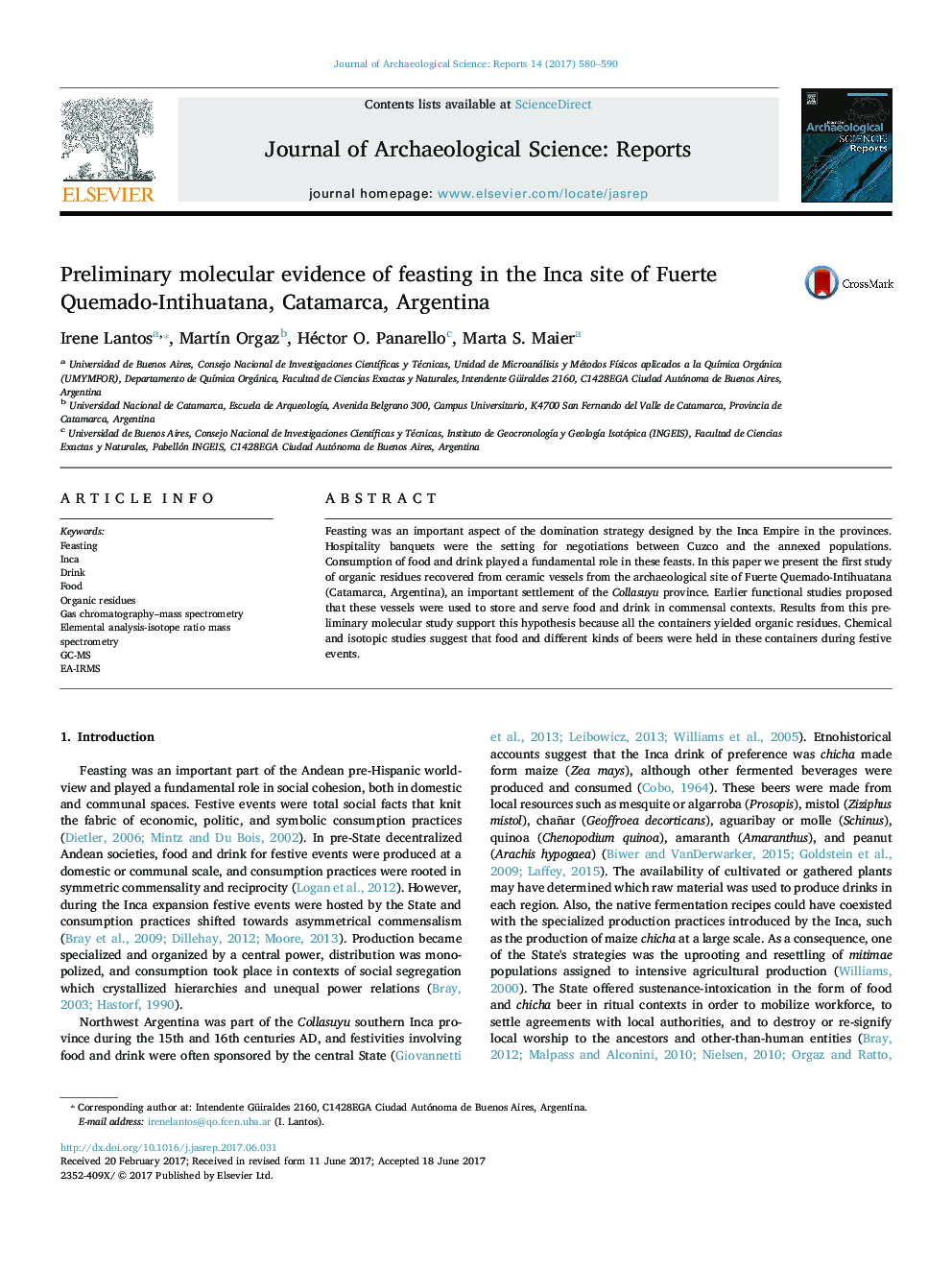| Article ID | Journal | Published Year | Pages | File Type |
|---|---|---|---|---|
| 5112366 | Journal of Archaeological Science: Reports | 2017 | 11 Pages |
Abstract
Feasting was an important aspect of the domination strategy designed by the Inca Empire in the provinces. Hospitality banquets were the setting for negotiations between Cuzco and the annexed populations. Consumption of food and drink played a fundamental role in these feasts. In this paper we present the first study of organic residues recovered from ceramic vessels from the archaeological site of Fuerte Quemado-Intihuatana (Catamarca, Argentina), an important settlement of the Collasuyu province. Earlier functional studies proposed that these vessels were used to store and serve food and drink in commensal contexts. Results from this preliminary molecular study support this hypothesis because all the containers yielded organic residues. Chemical and isotopic studies suggest that food and different kinds of beers were held in these containers during festive events.
Related Topics
Social Sciences and Humanities
Arts and Humanities
History
Authors
Irene Lantos, MartÃn Orgaz, Héctor O. Panarello, Marta S. Maier,
